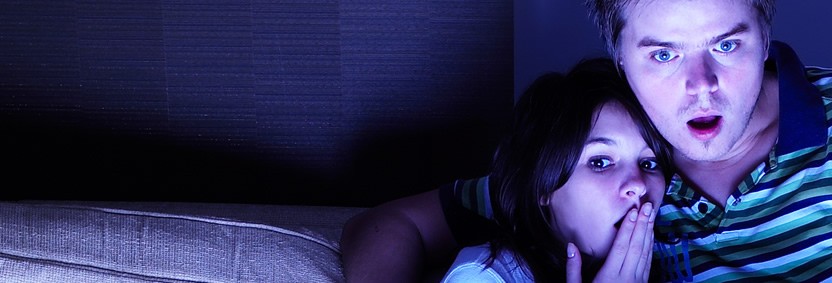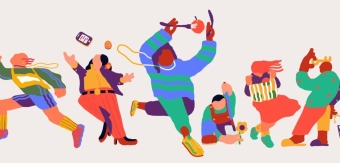The most successful film in UK cinemas this week is 'Insidious 2'. Having seen the first 'Insidious' instalment just a couple of weeks ago, I don't think I'll bother with chapter two. The best horror movies are akin to long road trips through foreign lands - full of unexpected encounters, and heart-thumping experience. 'Insidious' is more of a ride on the dodgems - rather predictable with a few bumps thrown in.
As a lifelong fan, I have seen many, many horror films - starting with Hammer's 'Dracula', with the sublime Christopher Lee. This enthusiasm has, occasionally, led to accusations of unhealthy obsession. Why would a rational, balanced person wish to be exposed to nasty creatures, blood and menace? Surely that cannot be a good thing? And I understand this concern. But my accusers are wrong because they completely misunderstand horror’s place in popular culture.
Humankind's enjoyment of unsettling stories reaches back centuries. ‘Macbeth’ is a tale of, bloody murder, psychological torment and the supernatural; ‘Snow White’ features poisoning, torture and death, and Greek mythology is riddled with snake-haired women, one-eyed giants, mutant beasts and incest. Horror cinema is simply a modern incarnation of a tradition as old as creativity – the urge to explore our deepest doubts through the telling of stories. Almost every human culture and civilization has pursued this instinct, from the voodoo zombies of the Caribbean and banshee spirits of Ireland, to the demons of Hinduism and usurping gods of Samaria.
Take the film ‘Hellraiser'. The narrative tells of a man who unleashes demonic entities, set on subjecting him to unspeakable harm. But the movie is actually a visceral study of temptation, misplaced loyalty and the perils of desire. It's a layered and textural morality tale. Nothing in ‘Hellraiser’ seeks to persuade us there is anything to be gained from selfishness or violence. Unlike say, the designer violence of a police buddy movie like ‘Bad Boys’, which treats guns, fights, injury and death as nothing more than cosmetic thrills.
The downfall of threat is very much a part of horror’s narrative arc – Dracula receives a sharpened stake, The Wolf Man a silver bullet, The Mummy crumbles as the animating spell is reversed. Such finales are essential genre tropes – they give the tales purpose. (One might argue ‘The Blair Witch Project’ is the exception that proves the rule.)
If you're long enough in the tooth, without being a vampire, you'll recall a tremendous fuss in the 1980s over something called ‘video nasties’. The government decided the proliferation of video recorders was allowing households to access horror material which was corrupting. ‘Driller Killer’, ‘I Spit On Your Grave’ and ‘Evil Dead’ appeared on a list of prohibited films, compiled by politicians, many of whom hadn’t seen the pictures. Most of these movies have now been screened on network television. They haven’t changed, but society’s attitude has. We’ve matured, and evolved an understanding of their intention.
A great horror movie takes us on a journey into our personal and collective psyche – allowing us to contemplate our anxieties, our dreads and our relationship with things we struggle to understand. But, at the same time, it enables us to rationalise fear, to expunge apprehension and face down our nightmares. Along the way it will undoubtedly shine a torch in some uncomfortably dark corners, startling and alarming us. But the finest horror pictures are ultimately uplifting, because they remind us that evil is a human construct and can therefore, be vanquished.
Magnus Shaw is a writer, blogger and broadcaster




